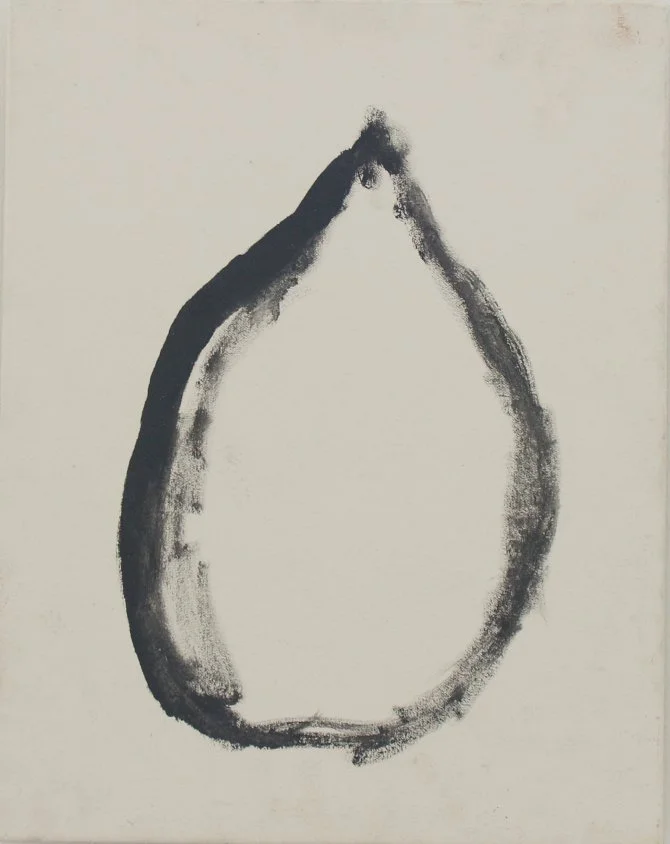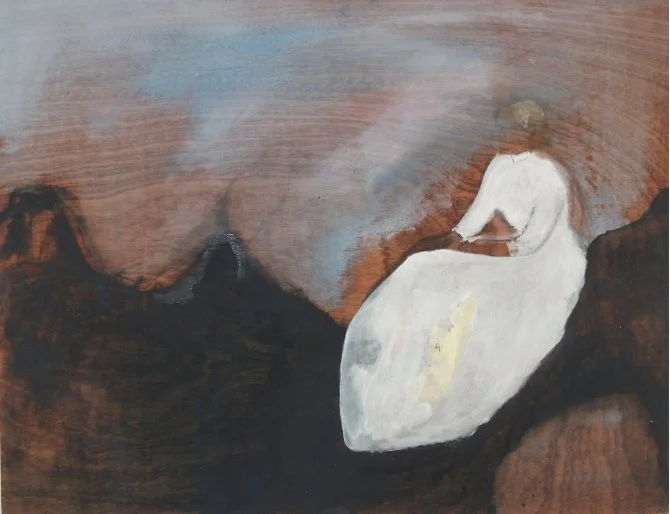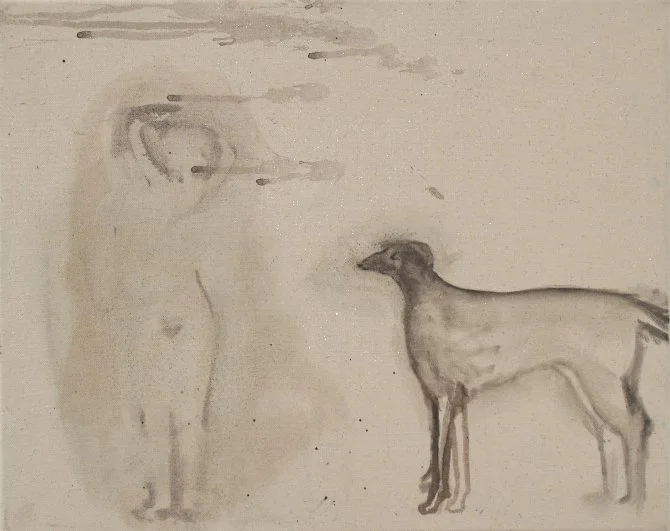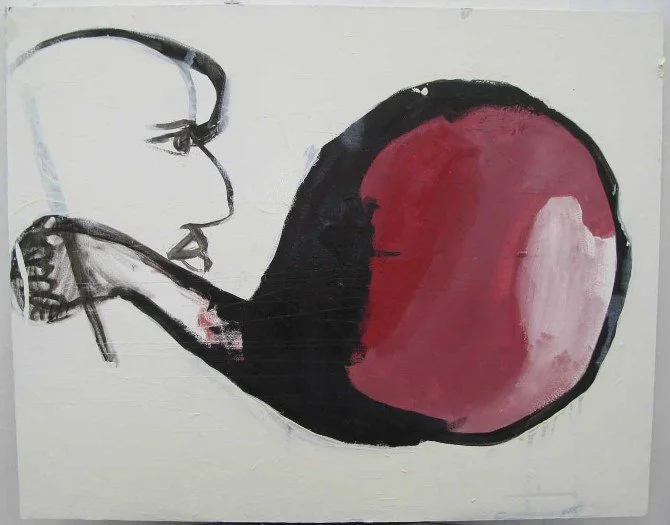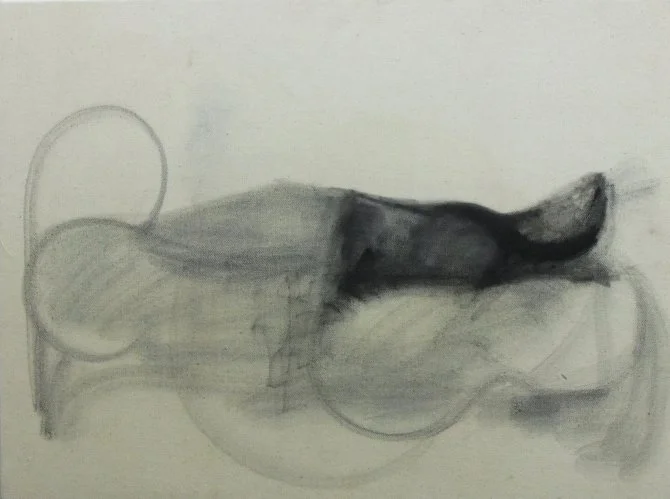Hattie Batten
Based in Bridport
These paintings have evolved over a long time, some of them over the whole year. They are mostly from my imagination, although some are the result of direct inspiration from artists.
Many of my paintings evolve from a series of visual images that have imprinted themselves in my consciousness and begin to evolve into a design that will suddenly appear in my mind.
If I am feeling sad about something, or excited, or in love, I think, “how can I make this into a painting?” and an idea and a composition will come into my mind.
When I did “Chub”, for example, I had been looking at Pyramid and Shoe, 1977 by Philip Guston, and I wanted to try and copy the lovely shiny black marks, as well as the shape of the shoe.
“Girl With Some Rocks” is a ‘copy' of Munch's painting Inger on the Shore, 1889. I really liked the romance and sense of femininity of Munch's painting, how the delicately poised girl seems to be at the beginning of her life, waiting for something to happen. I also really like this painting because to me rocks are a metaphor for a certain man that I know, and so it is as if this girl is thinking about or having a conversation with a man and considering her relationship with him.
After looking at this painting, I decided to do a girl contemplating some rocks, and I did it on wood because I liked how the grain on the wood flowed from one side to another, like a landscape. I changed the rocks into a black inky mass which is similar to some landscapes that I did in second year.
I think my painting is slightly more anxious than Munch's painting, and the girl seems to be tenser and less sure of herself. I made the girls hair blonde so I could relate to her more, and she would be more like myself and reflect my thoughts and feelings.
“Lurcher Watching A Girl” is an example of this, because I was thinking about someone and this canvas was sat in my space and it was just the right size, shape and texture, so it encouraged this design to come into my mind.
This way of working is also true of “Meeting Him In A Landscape”. I had been looking at a lot of images and they had been building up in my mind, such as a print of a big dog like thing being shot at by Hokusai Manga, as well as images from “Picasso, a Bestiary” by Neil Cox and Deborah Povey. I really liked the large round curved shape in the corner of Hokusai's picture, and I wanted to do a painting with a similar composition.
Most of the images from the Picasso book seem to have no direct similarity with my painting, but I think my mind has taken elements from each image and merged them into a design for a painting. Made up of large, animal like shapes, the images I looked at in this book all have a sense of roundness and physical power.
The large brown shape in my painting is also similar a Ucello painting of a man on a horse on a plinth, especially the horse's bottom. Horses have always been very important to me, and they have become a “personal symbol” of freedom and being young. When I was younger I spent a lot of time riding my horse around in the countryside, thinking about people I was in love with, and I think in these paintings I am revisiting that time in my life, and maybe saying goodbye to it. My paintings evolve from a series of images
In my work I am mainly trying to process feelings that I have about certain people or times in my life. I am trying to explore how relationships and feelings can be represented as dialogues between animals and humans, within a time and place and an “event,” such as a fight between a girl and her horse and a dragon, or a meeting.
I would like to explore how to use space within a painting to create an event, rather than a sense of narrative. “Rock In A Landscape” was originally going to have a little horse and rider in it, thus becoming about a girl and her horse coming across a scary obstacle that would represent fear and anticipation. I decided against this idea however, because I wanted this painting to stay abstract, and a horse and rider would encourage the viewer to see this painting in a more figurative way.
The conversation between figuration and abstraction is something that I am currently exploring. I would like to find ways to encourage the viewer to see my paintings as abstract shapes and marks that represent sensations and emotions.
I am interested in how old themes such as St. George and the Dragon can be revisited in a modern context, as well as relating them to my own work. Chris Ofili and Philip Guston are both artists who do this in exciting and fresh ways.
My use of self portrait also reflects my interest in Frida Kahlo and the way she places herself with a scene and turns herself into an animal, or describes experience and emotion through transformation. Her “incorporation of symbolic portrayals of physical and physiological wounds” is something of great fascination to me and in my own work I try to explain my own experiences in a similar personal manner.
